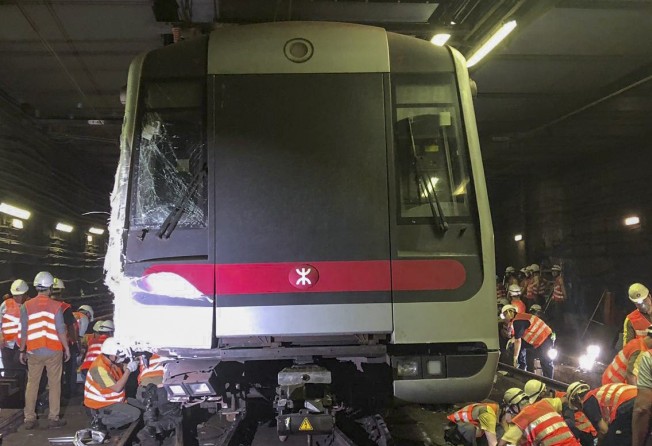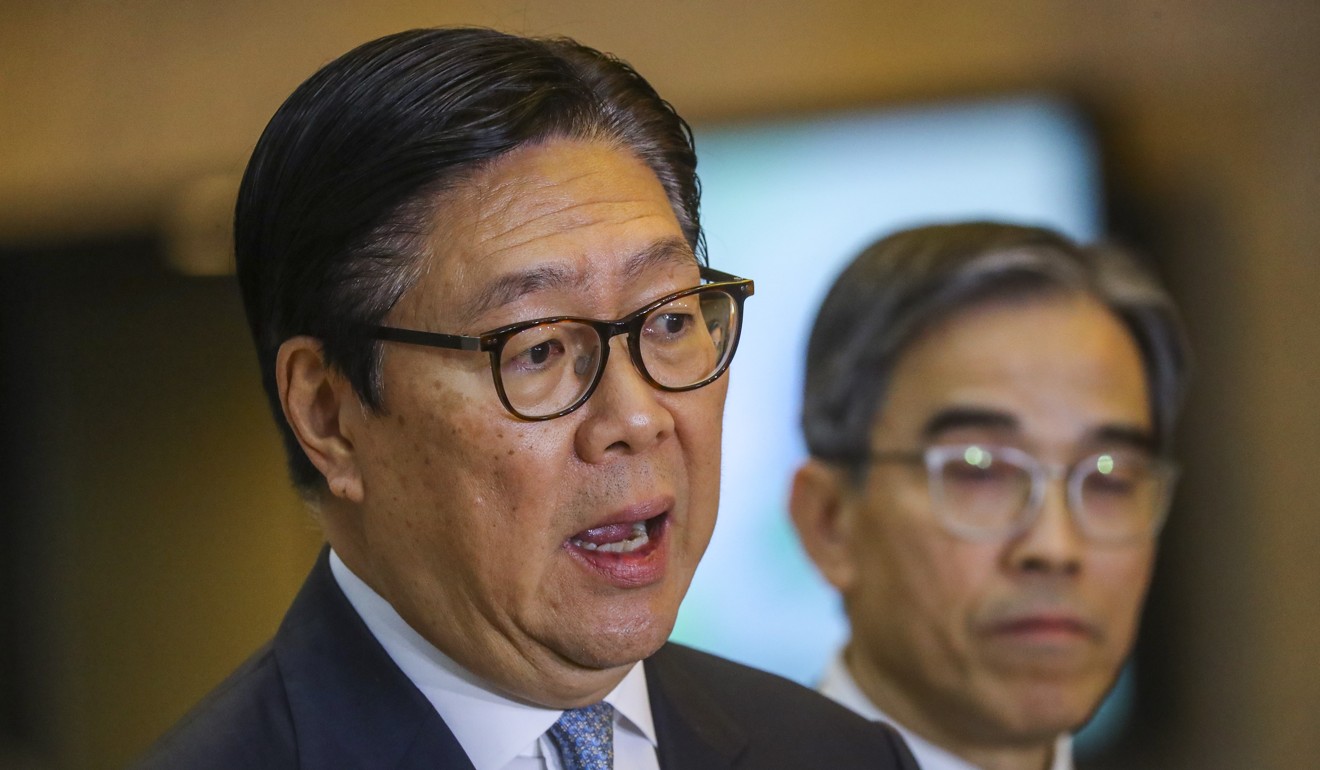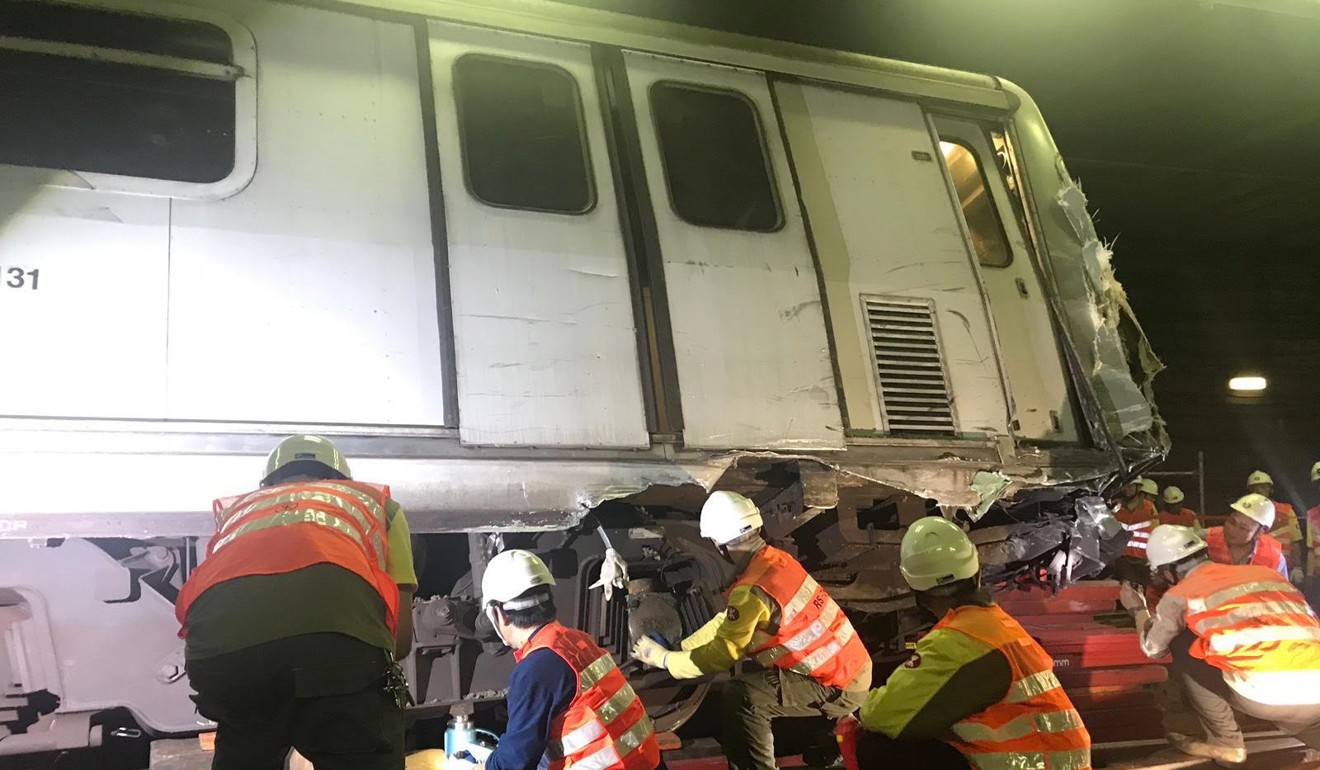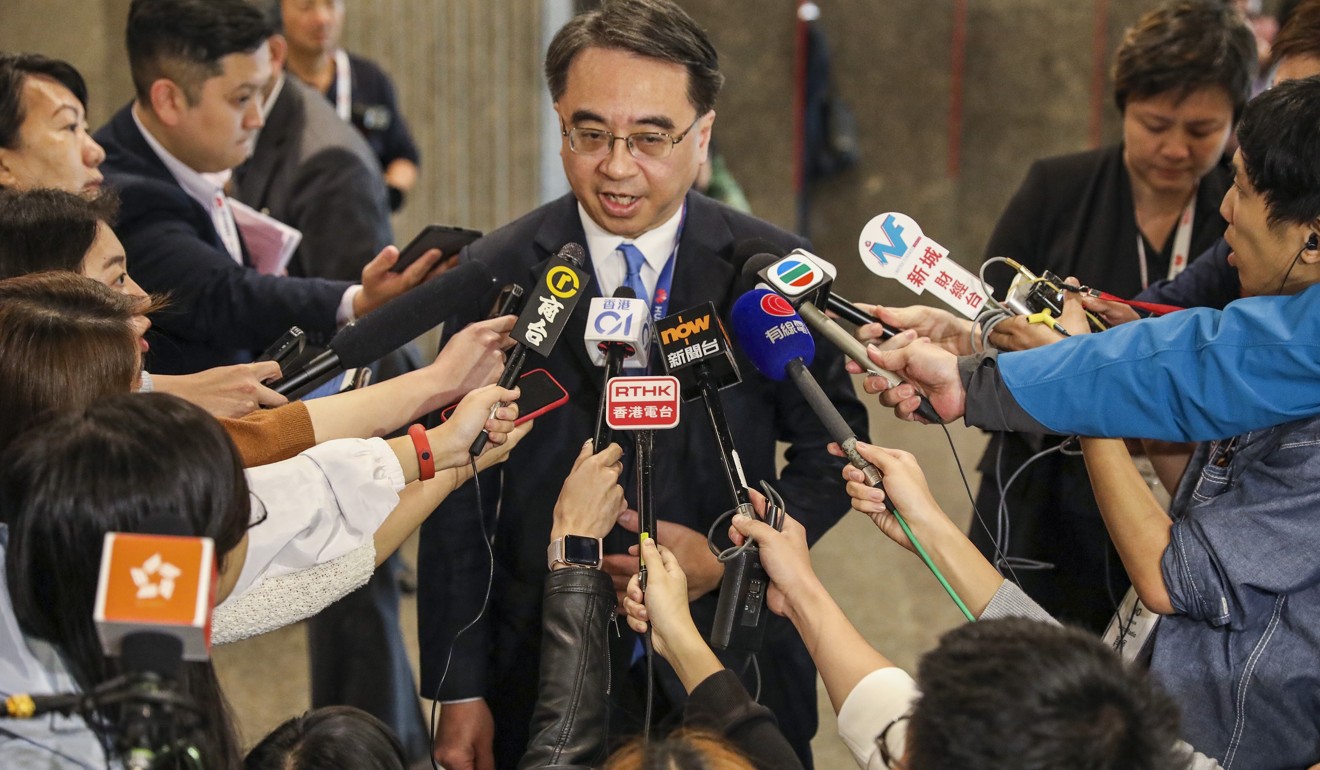
Derailed MTR train back on tracks after crash as Hong Kong government assures public signalling system upgrade will only go ahead if safety is guaranteed
- No rush to roll out SelTrac CBTC signalling system and tests will be suspended until safety is assured, government says
- System supplier Thales says there is nothing wrong with it, and the company will issue a report on the incident on Friday

Hong Kong’s top officials scrambled to assure a jittery public that a new signalling system upgrade being tested for the city’s entire railway network would only be accepted if safety was guaranteed, as uncertainty remained on whether services would fully return to the Tsuen Wan line on Wednesday after an unprecedented train crash on Monday.
At 11pm on Tuesday, the MTR Corporation said it had successfully moved a derailed train back onto the tracks and would try to tow it away.
“As to whether train services between Central and Admiralty stations on the Tsuen Wan line can be resumed in the morning, it depends on the progress of restoration work,” the rail operator said.
Engineering staff would also have to check trackside facilities for damage.

Chief Executive Carrie Lam Cheng Yuet-ngor said on Tuesday morning there was no rush to roll out the new signalling system, which was supplied to the rail operator by French company Thales.
“I want to reiterate that public safety is of primary concern, so we will not rush to … put in place this new signal system until we are assured of [its] safety,” Lam said.
The train crash on Monday happened when the MTR Corp was testing the new signalling system, known as SelTrac CBTC.

Transport minister Frank Chan Fan echoed Lam, saying tests would be suspended until safety was assured.
“Only after all remedial measures are in place will the MTR Corp be allowed to conduct tests again,” Chan said after attending a special MTR Corp board meeting with representatives of contractors Thales and Alstom.
In a joint venture, the two French firms were awarded the contract to upgrade the signalling systems on seven MTR lines in 2015, for the price of HK$3.3 billion.
Train services between Central and Admiralty stations on the Tsuen Wan line have been halted due to Monday’s crash.
A Central-bound train ran into a Tsuen Wan-bound train at a crossing between Central and Admiralty at 3am on Monday.
A driver was hurt in the crash and the first carriage on the Central-bound train was derailed. No passengers had been on board.
MTR Corp’s operations director, Adi Lau Tin-shing, was careful not to say when he expected services to fully recover.

This was despite him saying workers had been making good progress in putting the derailed train carriage back on track before the day ended on Tuesday, with help from the Fire Services Department.
“If we can finish this process, we have more confidence of towing the train away during non-operational hours [on Wednesday morning],” Lau said.
He declined to say if it meant the stoppage on the Tsuen Wan line would continue on Wednesday, adding that other equipment on the tracks also needed to be checked.
Frank Chan said authorities would continue to work with other public transport providers to make up for the stoppage on the Tsuen Wan line.

The railway firm’s outgoing chairman, Frederick Ma Si-hang, said he was “shocked” to learn of the incident on Monday, given that Thales was a world-renowned company.
“We are obviously very unhappy with the performance of the contractors,” Ma said, adding that they had been told that the MTR Corp reserved all rights to take contractual actions.
Ma, however, said it was too early to discuss what action might be taken against Thales.
Ma also said a panel involving local and overseas experts would be set up to investigate the incident, and that the two contractors had agreed to cooperate.
Critics have asked if the MTR Corp could have previously identified the software issue, which allowed two trains to enter the same junction at once.
The railway firm’s managing director, Jacob Kam Chak-pui, said Thales had issued a certificate to assure it was safe to conduct such tests.
Meanwhile, Amaury Jourdan, vice-president for Thales’ technical and transport activity, denied there was a flaw in the design of the software.

“There’s nothing wrong,” he said at the Asia Pacific Rail conference in Hong Kong on Tuesday.
“First we are really very sorry for this incident and we’ll do whatever we can to find out the cause and help the MTR Corp fix the problem,” Jourdan said.
He added that Thales would issue a report on Friday about the cause of the incident, based on results from a computer simulation conducted in a laboratory in Toronto.
He disclosed that the issue might have been related to backup computers used in the new signalling system.
“For what we know of the problem, it’s linked to specific redundancy architecture for Hong Kong,” Jourdan said.
The new system has two backups, while the one in use has one.
As for paying compensation to the MTR Corp, he said: “I can’t answer this question. We are trained to fix the problem and to make sure the system is safe.”